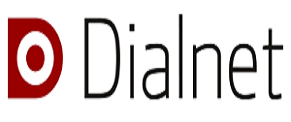The Impact of Physical Activity in the Control of Abnormal Behaviours of Iranian students
Keywords:
Leisure Time; Physical Activity; Abnormal Behaviours; Students.Abstract
Objectives: The present study aimed to investigate the role of the leisure time physical activities in the control of abnormal behaviours of male high school students in Tehran (Iran).
Methods: A sample of 1715 students was selected based on multi-stage cluster random sampling using Cochran’s formula. The research instrument was an ad hoc questionnaire of abnormal behaviours elaborated by the researchers and based on the previous literature. Its validity was confirmed by a group of fifteen university teachers of physical education, sociology, and psychology. The reliability was 0.85 using Cronbach’s alpha. Descriptive statistics, inferential statistics, and independent samples t-test (p?0.05) were used in the analysis of the data.
Findings: The results showed that participation in leisure time physical activities has a positive role in reducing all the three areas of abnormal behaviours (maladaptive behaviours, anti-social behaviours, and immoral behaviours).
Conclusions: Family leisure time planners, social and health policy makers are recommended to take supportive measures in order to incorporate sports activities in students’ lifestyle.
Downloads
References
Mahoney JL, Stattin H. Leisure activities and adolescent antisocial behavior: The role of structure and social context. J Adolesc. 2000;23(2):113-127. https://doi.org/10.1006/jado.2000.0302
Agnew R, Petersen DM. Leisure and delinquency. Soc Probl. 1989;36(4):332-350. https://doi.org/10.2307/800819
Meenagh A. Leisure, Organised Sport and Antisocial Behaviour an Examination of Youth’s Involvement in Leisure, Organised Sports and its Effect on Antisocial Behaviour. Masters Dissertation. Dublin Institute of Technology; 2011. https://doi.org/10.21427/D7ZR27
Sediq-Sarvestani, R. Social Pathology (Deviation Sociology). Tehran: Asar-e Sobhan; 2004.
Kelley M, Sokol KJ, Braddock JH, Bassinger FL. Control Theory, Sport and Patterns in Delinquency for Youth. NY: Edwin Mellen Press; 2004.
Hirschi T. Causes of delinquency. Berkley: University of California press; 1969.
Hawdon JE. Daily routines and crime: Using routine activities as measures of Hirschi's involvement. Youth Soc. 1999;30(4):395-415. https://doi.org/10.1177/0044118X99030004001
Hartmann D, Depro B. Rethinking sports-based community crime prevention: A preliminary analysis of the relationship between midnight basketball and urban crime rates. J. Sport Soc. Issues. 2006;30(2):180-196. https://doi.org/10.1177/0193723506286863
Ahmadi H, Muqaddas A, Khaje-nuri B. A comparative study of delinquent behavior among the high school students of the old and new education systems. Human and Behavioral Science Magazine of Shiraz University. 2001;6(2):193-206.
Anvaralkholy A. Sports and society. Tehran: SAMT Publications; 2002.
Aliverdinia A, Arman MV. Sport Activities and Delinquency: An Empirical Test of Hirschi’s Social Bond Theory. Journal of Movement Science & Sports. 2008;6(12):141-133.
Ebrahimi J. A Comparison of the way to spend leisure time and delinquency among sportsman and non-sportsman adolescents. MA dissertation. Tehran: Allame Tabatabaei University; 2011.
Begg DJ, Langley JD, Moffitt T, Marshall SW. Sport and delinquency: an examination of the deterrence hypothesis in a longitudinal study. Br J Sports Med. 1996;30(4):335-341. http://dx.doi.org/10.1136/bjsm.30.4.335
Morris L, Sallybanks J, Willis K, Makkai T. Sport, physical, activity and antisocial behaviour in youth. Canberra: Australian Institute of Criminology; 2003.
Holder MD, Coleman B, Zoe LS. The contribution of active and passive leisure to children's well-being. J Health Psychol. 2009;14(3):378-386. https://doi.org/10.1177/1359105308101676
Wilson DM, Gottfredson DC, Cross AB, Rorie M, Connell N. Youth development in after-school leisure activities. J Early Adolescence. 2010;30(5):668-690.
Rutten EA, Stams GJJ, Biesta GJ, Schuengel C, Dirks E, Hoeksma JB. The contribution of organized youth sport to antisocial and prosocial behavior in adolescent athletes. J. Adolesc. 2007;36(3):255-264.
Janssen I. Crime and perceptions of safety in the home neighborhood are independently associated with physical activity among 11–15 year olds. Prev med. 2014;66:113-117. https://doi.org/10.1016/j.ypmed.2014.06.016
Folino A, Ducharme JM, Greenwald N. Temporal effects of antecedent exercise on students' disruptive behaviors: An exploratory study. J. Sch. Psychol. 2014;52(5):447-462. https://doi.org/10.1016/j.jsp.2014.07.002
Rosenhan DL, Seligman ME. Abnormal psychology. NY: WW Norton & Co; 1995.
Ravanbakhsh MH. Abnormal behavior of the adolescent and family. Journal of Psych. 2006;1(2-3):145-174.
Hashemian K. Abnormality Psychology and the Modern Life. Tehran: Al-Zahra University Press; 1997.
Cohen LE, Felson M. Social change and crime rate trends: A routine activity approach. Am Sociol Rev. 1979;44(4):588-608. http://dx.doi.org/10.2307/2094589
Nazari N. The Role of the Place of Leisure Time Sports Activities in the healthy and Social Behaviors among Male Students in Tehran. MA dissertation. Tehran: Allame Tabatabaei University; 2011.
Downloads
Published
How to Cite
Issue
Section
License
Copyright and Licensing
For all articles published in Atena Journals, copyright is retained by the authors. Articles are licensed under an open access Creative Commons CC BY 4.0 license, meaning that anyone may download and read the paper for free. In addition, the article may be reused and quoted provided that the original published version is cited. These conditions allow for maximum use and exposure of the work, while ensuring that the authors receive proper credit.
Reproducing Published Material from other Publishers
It is absolutely essential that authors obtain permission to reproduce any published material (figures, schemes, tables or any extract of a text) which does not fall into the public domain, or for which they do not hold the copyright. Permission should be requested by the authors from the copyrightholder (usually the Publisher, please refer to the imprint of the individual publications to identify the copyrightholder).
Permission is required for:
- Your own works published by other Publishers and for which you did not retain copyright.
- Substantial extracts from anyones' works or a series of works.
- Use of Tables, Graphs, Charts, Schemes and Artworks if they are unaltered or slightly modified.
- Photographs for which you do not hold copyright.
Permission is not required for:
- Reconstruction of your own table with data already published elsewhere. Please notice that in this case you must cite the source of the data in the form of either "Data from..." or "Adapted from...".
- Reasonably short quotes are considered fair use and therefore do not require permission.
- Graphs, Charts, Schemes and Artworks that are completely redrawn by the authors and significantly changed beyond recognition do not require permission.
Obtaining Permission
In order to avoid unnecessary delays in the publication process, you should start obtaining permissions as early as possible. If in any doubt about the copyright, apply for permission. Atena Journals cannot publish material from other publications without permission.
The copyright holder may give you instructions on the form of acknowledgement to be followed; otherwise follow the style: "Reproduced with permission from [author], [book/journal title]; published by [publisher], [year].' at the end of the caption of the Table, Figure or Scheme.














